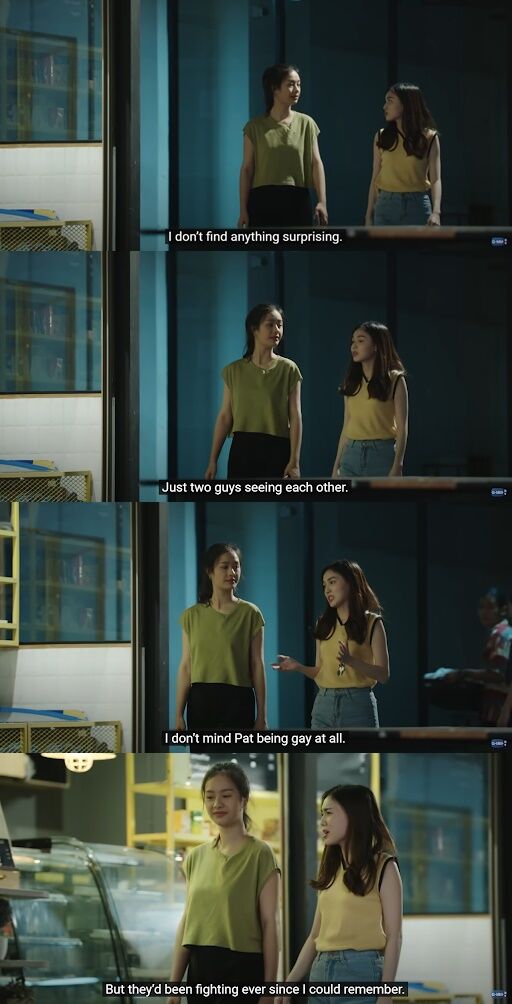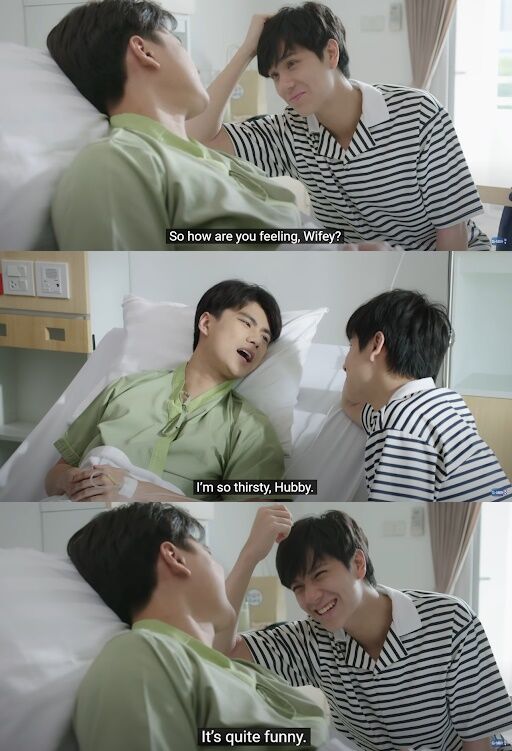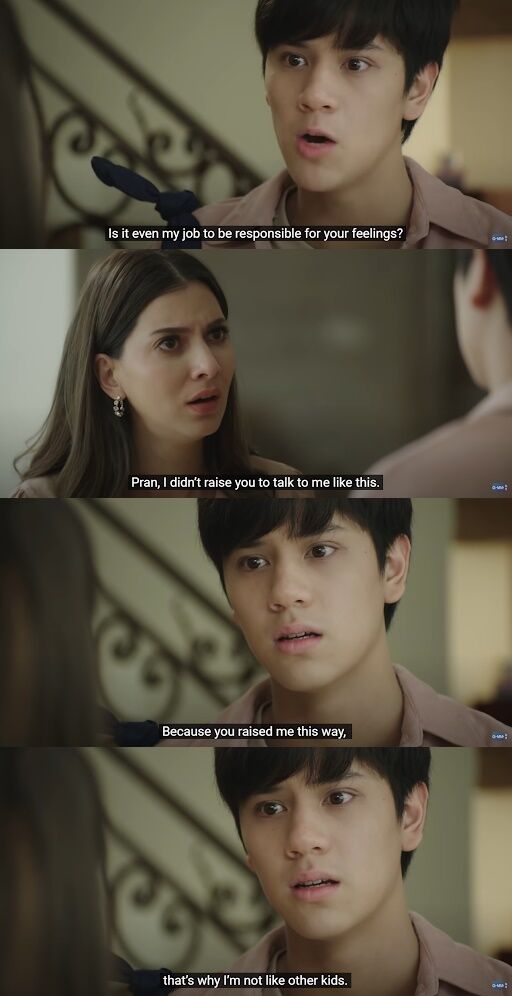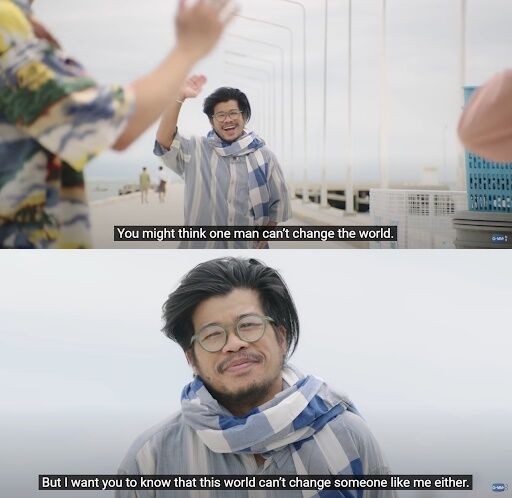Three Things Bad Buddy Series Did Right

It wouldn't be wrong to say this show made a revolution in its genre while being a story with a simple and familiar premise.
The world has been slowly but surely swept by the new trend that is Thailand TV shows. While most of the popular titles exist within the Boys Love (BL) genre, there is a huge variation in settings, story ideas, budget, degree of seriousness, and execution. Starting with SOTUS, the series which made a big worldwide impact first, for the past six or so years Thailand television industry has been producing many different BL shows creating their own big fandoms. However, despite already having found a simple yet effectively working fan service formula to attract many viewers' attention and dedication, Thai BL show creators keep improving their storytelling and presenting the world with new well-done and meaningful series from time to time.
One of the shows that exploded on social media in 2021 was the Bad Buddy series, a romantic BL comedy-drama, directed by Noppharnach Chaiwimol, also known as Aof, and starring Korapat Kirdpan (Nanon) and Pawat Chittsawangdee (Ohm). Bad Buddy is currently having a rerun, and if you missed the trend train, now is the time to hop on and enjoy this romantic story of two mischievous rivals, Pran and Pat.
Besides incredible chemistry that the main leads and supportive cast had, this story was constantly praised by fans and critics for being self-aware and talking about important matters under a simple 'forbidden romance in the Capulets and the Montagues families' premise.
Here are three things the Bad Buddy series did right, effectively bringing Thai BL shows to a whole new level:
Erasing homophobia from the narrative
This is something Western media still struggles with – showing queer people existing in a world that doesn't hate them. Many TV series just have to show their LGBTQA+ characters being oppressed and struggling to get acceptance, often solemnly being presented with the Bury Your Gays trope as an end game. Meanwhile, Thailand's TV industry wasn't affected by the Hays code, and so finds its own way of portraying of queer people.
In Bad Buddy, several characters positively commented on different sexualities, from parents to university students, and battling with their own queer self-identity isn't something that takes up screen time. However, homophobia virtually non-existent doesn't take away dramatic tension in this story. Pat and Pran's relationship is forbidden by their parents, as their families hate each other. Even their friendship has to be hidden because of the rivalry between their university departments.
Even though no one explicitly shames characters for being attracted to the same sex, this hostile environment forcing Pat and Pran to hide their feelings, their true selves, and conform to the established way of living does ring a bell for some viewers. By creating a metaphor based on personal conflicts familiar to many people, Bad Buddy managed to let even non-queer viewers identify with the characters, understand the existing social issues and empathize. Anyone who ever felt alienated by their family or pressured because of their social status, religion, or personal identity can easily read the subtext and relate to Pat and Pran's experience of being alienated, afraid, disappointed and just wanting to live peacefully and love freely. All without burying the gays.

Breaking stereotypes
The above-mentioned successful formula of Thai BL slowly becomes outdated, and it's reflected in witty and playful dialogues by Bad Buddy's characters, which implies the director's acknowledgment of the current industry's issues and desire to show an example of improvement.
Couples in BL shows are known for leaning into heteronormative default, which can most likely be traced back to the times when series with queer characters were written and filmed by straight people. This is the reason we have two guys in many Thai series referring to the roles in their relationship as 'a wife and a husband', or one taunting another with 'shall I make you my wife?'. In the past few years, the trend has been slowly changing towards more accurate representation, and Bad Buddy decided it was a good time to call other series out. After becoming Pran's boyfriend, Pat refers to his lover as 'my wife' several times, to which Pran strongly opposes; later he asks if calling him a wife made Pat feel superior and shows him just how weird this "role assignment" actually is.

Another prominent Thai series trend that many people now have a problem with is associated with declarations of love. As if denying their sexual orientation, characters tend to say "I don't like other guys, I only like you". It was viewed as a romantic confession for a long time, but director Aof, openly gay himself, decided to call out this trope in his work as well. Many fans were not expecting that but loved to see a scene with the main characters having a meal and discussing their preferences in a casual manner. Pat's sister Paa even mocked her brother's confession by saying she'd thought Pat'd say he only liked Pran, not other guys.
It should be noted that female characters in Bad Buddy have also been given much more fair, gentle and respectful treatment, compared to the usual happenings in Thai BL shows where girls only showed up to cause jealousy or conflicts between future lovers. Just how many stereotypes Bad Buddy managed to break at once?
Showing the effect of generational trauma
The whole Bad Buddy premise is parents forbidding Pat and Pran from getting close to each other due to the significant hatred between their families. Even though (warning: spoilers ahead) Bad Buddy didn't have a fairytale-like happy ending where two feuding sides eventually form one big family thanks to their kids falling in love with each other, the story realistically showed them coming to understanding and accepting their kids going on their own path in life. The importance of letting go and choosing to be a better person because you want to see your kid happy is what made every viewer sigh in relief when they saw Pran's mom hesitantly smiling as she heard her son laughing happily together with her enemy's son.
Not only relationships can be ruined by parents passing down their issues onto kids, but it is also clearly shown in the series how Pat's father was affected by his own father which had the feud started. In his turn, Pat was pressured to behave accordingly and appease his father, his interests and hobbies being denied. Pran also stands up to his mother, after all, accusing her of the fact that he grew up a lonely teenager with a lot of suppressed emotions and secrets to hide thanks to her uptight parenting caused by her own trauma.

This conflict between parents, and parents with their kids, is the main topic the series explores, and it's given a lot of meaning and importance. Besides becoming something that viewers can relate to, it shows that children can live their own lives no matter the social pressure and alienation from family, and the hope isn't gone, despite how one can feel living in a psychologically pressing and disappointing environment. This also rang a bell with many viewers who were comforted by the show's message.
Overall, Bad Buddy has managed to be a well-crafted show with relatable and charming characters. It has received many awards, despite not having a groundbreaking plot or political commentary that other series were praised for. Sometimes directors, filming crew, and actors just do their job perfectly right, creating something that wins over people's hearts.

